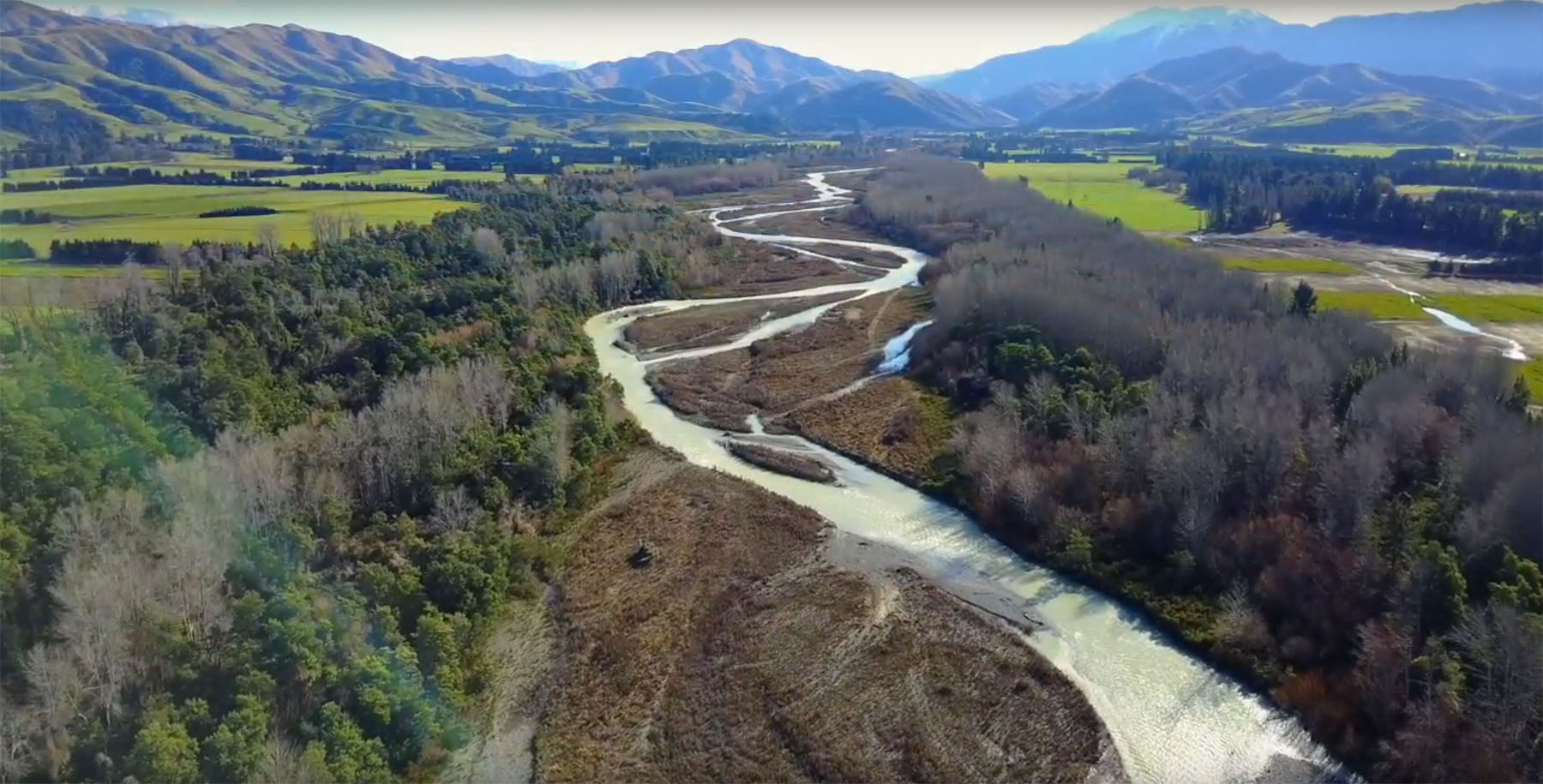Weeds, including trees
Why weeds are a problem
Nationwide, it’s estimated that over 60% of braided river bird nesting habitat has been lost to weed encroachment.
Canterbury’s braided rivers are home to unique native plant communities especially adapted to growing in the challenging environment of shifting gravels, extreme temperatures and limited nutrients. This natural vegetation is often low-lying and sparse because of the dynamic morphology of braided rivers, providing the perfect habitats for braided river birds, reptiles, and invertebrates.
Many invasive plants were brought into New Zealand by European settlers for agricultural or garden use. Others were planted along riverbanks to prevent flooding, with little to no understanding that braided rivers need to wander across a wide braidplain, not be confined to a few deep and narrow channels. This exacerbates flood risks as well.
See Canterbury maps: weed mapping tool to zero in on the types and range of weeds in rivers.
Several of these plants, including willow, broom, and Russell lupin, have invaded braided rivers, changing their natural dynamic nature (Video 1) destroying their specialised ecology and vital ecosystem functions, including helping to clean water from the high level of nitrates generates by dairy farms.
These weeds are:
- Easily established
- Become dense stands, shading out and displacing threatened plants and whole native plant communities such as the cushion forming ‘forget-me-not’ (Myosotis uniflora) and the rare dwarf woodrush (Luzula celata)
- Many fix nitrogen, which changes the chemistry of the soil, making it unsuitable for native plants
- Some suck up huge quantities of water like a sponge, lowering the river level and water table
- Entwined roots hold the gravel together, forming stable areas. The river erodes the edges, creating steep banks and restricting the water so that instead of braiding, it develops deep, fast-flowing channels unsuitable for wading birds to feed in
- Dense stands take over the open spaces where braided river birds like to nest. This is deeply concerning for rare and endangered birds that nest exclusively along braided rivers, particularly the wrybill, black-fronted tern and kakī/black stilt, which normally feeds in shallow river braids
- Provide cover for introduced predators to sneak up on nesting birds
Conservation efforts
- See Space invaders: A review of how New Zealand manages weeds that threaten native ecosystems (Parliamentary Commissioner for the Environment)
- Environment Canterbury’s submission in response to ‘Space Invaders’
- Several programmes are underway to control or remove weeds in rivers. The responsibility for this control depends on who owns different sections of rivers. See Video 2.
- Land Information New Zealand (LINZ) Biosecurity Control Programme: link to a list of annual reports with maps detailing what controls have been used on waterways around New Zealand. See also: 2022: Boffa Miskell; Upper Waimakariri Weed Control Control Strategy Full report | Strategy Report only | Appendices only

References and research papers
- 2023: Environment Canterbury Weed Control Summary 2022-2023
- 2023: Upper Rakaia Weed Strategy (Boffa Miskell report prepared for LINZ)
- 2022: Boffa Miskell; Upper Waimakariri Weed Control Control Strategy Full report | Strategy Report only | Appendices only
- 2022: Khan; Comparing aerial image analysis and ground-level monitoring of weed control strategies for Rakaia and Clarence River, report prepared for Environment Canterbury
- 2021: Space invaders: A review of how New Zealand manages weeds that threaten native ecosystems (Parliamentary Commissioner for the Environment)
- 2021: Gunn & Smith; Expanding weed and pest control operations in Rakaia River – What next? Braided Rivers Seminar
- Managing weeds (DOC)
- Biological control of weeds (Landcare Research)
- Weedbusters
- Strategic Plan for Managing Invasive Weeds (DOC PDF)
- The need for control of exotic weeds in braided riverbeds for the conservation of wildlife (PDF)
- 2019 (Ecan): Monitoring extent of available habitat for indigenous braided river birds in Canterbury– a 2012 baseline
- 2019 (ECan): Clarence Waiau Toa Riverbed weed control strategy
- 2019 (ECan): Update of supported projects including weed removal (BRaid seminar)
- 2017: Hoyle (NIWA) The effects of vegetation/weeds on braided rivers (BRaid seminar)
- 2017: Davey & Ledgard; Weed invasion of the Ashley-Rakahuri River: implications for endemic birds (BRaid seminar)
- 2016: Brummer; The drivers of weed invasion in gravel riverbeds (BRaid workshop)
- 2014: Harding (DOC); Upper Waimakariri River Weed Control Strategy
- See also Ecology/references
